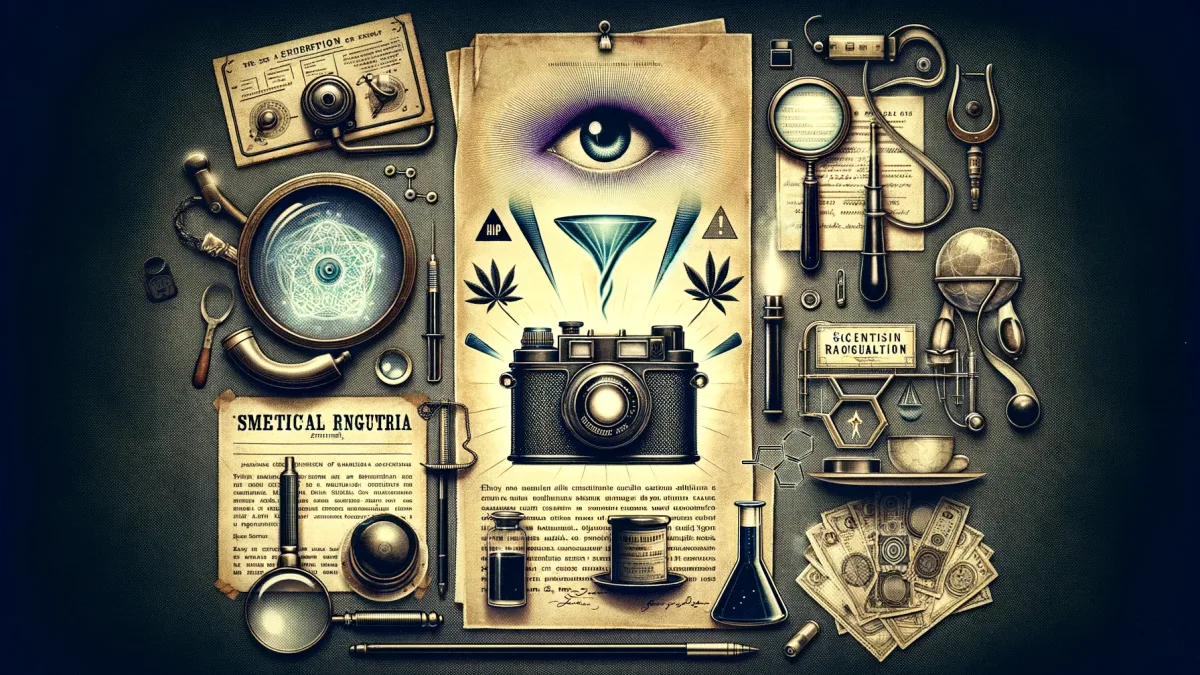Hey there, curious minds! Today, we’re unraveling a peculiar mystery that’s been coloring the corners of legal and scientific communities alike: the curious case of dicyanin dye. If you’ve stumbled down the rabbit hole of obscure laws and regulations, you might have heard whispers about this seemingly innocuous substance. So, why is dicyanin dye illegal? Grab your detective hats, because we’re about to embark on a journey through history, law, and the realms of the unseen.
What Is Dicyanin Dye?
Before we dive into the legalities, let’s paint a picture of what dicyanin dye actually is. Dicyanin is a chemical compound that, for a brief period, caught the eye of researchers and mystics alike. Its most notable, albeit disputed, claim to fame? Its alleged ability to enhance the perception of auras or the electromagnetic fields surrounding people and objects.
The Aura of Controversy: Dicyanin Dye’s Legal Status
The legal status of dicyanin dye in the United States is shrouded in as much mystery as its purported capabilities. Contrary to popular belief, there isn’t a straightforward law that outright bans dicyanin dye. Instead, the dye’s legal quagmire is more a product of regulatory restrictions and its classification under certain chemical control laws.
A Colorful History: The Espionage Act Connection
The tale takes a darker turn with the introduction of the Espionage Act of 1917. Some accounts suggest that due to dicyanin dye’s potential use in espionage—allegedly enabling the viewing of otherwise invisible ink or revealing secret messages—the U.S. government restricted access to the dye under this act. However, concrete evidence linking dicyanin dye to the Espionage Act remains elusive, blending historical fact with speculative fiction.
The DEA and Controlled Substances
Another layer to this colorful story involves the Drug Enforcement Administration (DEA) and the Controlled Substances Act. While dicyanin dye is not specifically listed as a controlled substance, its chemical precursors or the process of its synthesis could potentially fall under regulatory scrutiny. The DEA monitors chemicals that could be used in the illicit production of narcotics, which may indirectly affect substances like dicyanin dye.
The Science Behind the Claims
The scientific community remains skeptical about the claims surrounding dicyanin dye. The ability to see auras or electromagnetic fields through the use of a chemical compound lacks empirical support. As such, the dye’s prominence in certain circles may stem more from pseudoscience and mysticism than from verifiable scientific research.
Modern Legal Implications
Today, the legal hurdles to obtaining dicyanin dye are more likely tied to its chemical classification and the regulations governing potentially hazardous substances. Manufacturers and researchers dealing with chemical compounds must navigate a labyrinth of safety regulations, environmental protections, and potential misuse concerns.
The Bottom Line: Navigating the Shades of Grey
So, why is dicyanin dye illegal? The answer is complex, entwined in historical anecdotes, regulatory frameworks, and the fine line between science and pseudoscience. While there isn’t a specific law that names dicyanin dye as illegal, a combination of factors contributes to its restricted status and the aura of mystery surrounding it.
Final Thoughts: A Spectrum of Possibilities
In the realm of legal oddities, dicyanin dye occupies a unique space. Its story is a reminder of how law, science, and societal perceptions can converge in unexpected ways. For the curious investigator, the tale of dicyanin dye encourages a deeper look into how we regulate, control, and understand the substances that enter our collective consciousness.
Whether you’re a legal professional, a scientist, or simply someone fascinated by the peculiar corners of law and lore, the case of dicyanin dye serves as a colorful footnote in the annals of legal and scientific inquiry.









Leave a Reply